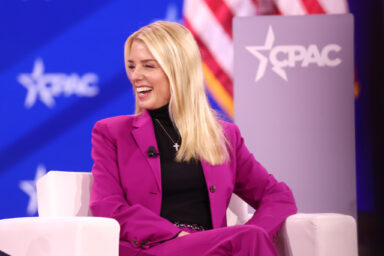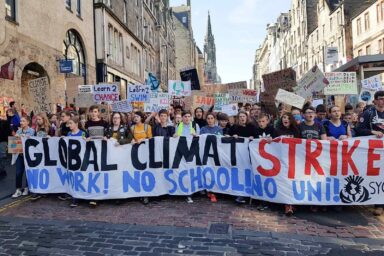The second installment of our series on how the worst devastation caused by the Atomic bomb was deliberately concealed from Americans for decades.
The second installment of our series on how the worst devastation caused by the Atomic bomb was deliberately concealed from Americans for decades. You can read Part One here.
On the morning of August 6, 1945, a B-29 dropped an atomic bomb over the center of Hiroshima, killing at least 70,000 civilians instantly and perhaps 50,000 more in the days and months to follow, the vast majority women and children. Three days later, the U.S. exploded another atomic bomb over Nagasaki, slightly off target, killing 40,000 immediately and dooming tens of thousands of others. Within days, Japan had surrendered, and the U.S. readied plans for occupying the defeated country—and documenting the first atomic catastrophe.
The American public knew little about conditions there beyond Japanese assertions that a mysterious affliction was attacking many of the survivors, claims that most Americans took to be propaganda. Newspaper photographs of victims were non-existent or censored. Life Magazine would later observe that for years “the world…knew only the physical facts of atomic destruction.” Many were still dying horribly from the new ‘A-Bomb disease’—that is, the effects of radiation–or burns from the original blast. Tens of thousands of American troops occupied the two cities. Few were urged to take precautions.
The Japanese newsreel company Nippon Eigasha was already shooting film in the two stricken cities. On October 24, 1945, a U.S. military policeman ordered a Japanese cameraman in Nagasaki to stop shooting. The U.S. General Headquarters (GHQ) confiscated his film, and the rest of the 26,000 feet of Nippon Eigasha footage. An order banned all further filming. It was at this point that Lt. Daniel McGovern took charge.
McGovern—a director and member of Hollywood’s famed First Motion Picture Unit—was one of the first Americans to arrive in Hiroshima and Nagasaki. He was with the U.S. Strategic Bombing Survey, which was studying the effects of the air campaign against Germany and Japan.

When McGovern learned of the Japanese footage, he noted in a letter to his superiors that “the conditions under which it was taken will not be duplicated, until another atomic bomb is released under combat conditions.” He proposed hiring a Japanese crew to edit and “caption” the material, so it would have “scientific value.”
Later, McGovern was ordered by General Douglas MacArthur to document the results of the U.S. air campaign in more than twenty Japanese cities. His crew would shoot exclusively on Kodachrome and Technicolor, rarely used at the time, even in Hollywood. McGovern assembled a crew of eleven, including two civilians. Third in command was a young lieutenant from New York named Herbert Sussan.
Sussan told me that after their train pulled into Nagasaki, “Nothing and no one had prepared me for the devastation I met there.” He added, “We were the only people with adequate ability and equipment to make a record of this holocaust.”
McGovern’s crew documented the physical effects of the bomb, including ghostly shadows of vaporized civilians burned into wall. Even more chilling, dozens of hospital patients were asked to display their burns, scars, and other lingering effects for the camera as a warning to the world. A Japanese doctor at the Red Cross Hospital in Hiroshima traced the hideous red scars that covered several of the patients—then took off his shirt and displayed his own cuts and burns.
After sticking a camera on a rail car, the Americans filmed hair-raising tracking shots through the ruins that could have been lifted from a Hollywood horror movie. The Chief cameraman working for the Americans was Japanese, Harry Mimura who, in 1943, had shot Sanshiro Sugata—the first feature film by a then-unknown director named Akira Kurosawa.
Meanwhile, that May, the Japanese newsreel team was completing the editing ordered by the U.S. Several took the courageous step of getting the lab to secretly duplicate footage—and hiding it in a ceiling at the lab.
Deep-Sixing the Film
The following month, in June of 1946, McGovern hauled 90,000 feet of color footage to the Pentagon and submitted it to General Orvil Anderson. Locked away and declared top secret, it did not see the light of day for more than thirty years.
Fearful that his film might get “buried,” McGovern stayed on at the Pentagon as an aide to Gen. Anderson, who was fascinated by the footage and at first had no qualms about showing it to the American people. Once the top brass screened it, however, most high-ranking officers didn’t want it widely shown.
The Atomic Energy Commission (AEC) was also opposed, according to McGovern. It nixed a Warner Brothers feature film based on the footage, while paying another studio about $80,000 to help make four “training” films to show U.S. soldiers how such weapons might he used on the battlefield, and steps they’d need to take to prevent exposure to deadly radiation.
In a March 3, 1947, memo given to me by McGovern, Francis E. Rundell, a major in the Air Corps, explained that the film would be classified “secret.” This was determined “after study of subject material, especially concerning footage taken at Hiroshima and Nagasaki.”
The color footage was shipped to the Wright-Patterson base in Ohio. McGovern went along after being told to put an I.D. number on the film “and not let anyone touch it—and that’s the way it stayed,” as he put it. After cataloging it, he placed it into a vault in the top-secret area.
Herbert Sussan, now a top TV producer, became obsessed with finding this cache of unique documentary footage he helped make, and getting it aired. But his efforts kept running into walls. He wrote a letter to President Truman, suggesting that a film based on the footage
“…would vividly and clearly reveal the implications and effects of the weapons that confront us at this serious moment in our history.”
A reply from a Truman aide dashed those hopes, saying such a film would lack “wide public appeal.” (The White House also censored the first Hollywood movie, an MGM epic, about the bomb, as I wrote here recently.)
McGovern, meanwhile, continued to “babysit” the film, as he put it, now at Norton Air Force base in California.
The Phantom Film
Starting in the 1950s, the Japanese government repeatedly asked the US for the full release of their own film, known to the Japanese as “maboroshi”, or the “phantom” film.
Nuclear fears soared in the 1960s, driven in part by the Cuban missile crisis in 1962. But few in American media or governmental circles challenged the consensus view that dropping the bomb on two Japanese cities had been necessary.
On September 12, 1967, the Air Force quietly transferred the Japanese footage to the National Archives Audio Visual Branch, with the stipulation that it was “not to be released without approval of DOD (Department of Defense).”
Then, in the summer of 1968, Erik Barnouw, author of landmark histories of film and broadcasting, saw a clip from a Tokyo newspaper indicating that, after high-level governmental negotiations, the U.S. had finally shipped to Japan a copy of black and white newsreel footage shot in Hiroshima and Nagasaki. When Barnouw learned that the original nitrate film stock had been quietly turned over to the National Archives—and was by then available—he went to take a look.
And he turned what he saw into a work of art—a subtle, quiet, even poetic film, created from a carefully selected 16 of the original 160 minutes. Hiroshima-Nagasaki 1945, was a sketchy but quite moving document of the aftermath of the bombing, captured in grainy but often startling black and white images: shadows of objects or people burned into walls, ruins of schools, miles of razed landscape, with a montage of human effects clustered near the end for impact.
In the weeks ahead, however, none of the TV networks expressed interest in airing it. “Only NBC thought it might use the film,” Barnouw later wrote, “if it could find a ‘news hook.’ We dared not speculate what kind of event this might call for.” But then an editorial in the Boston Globe blasted the networks’ reluctance. What was then called National Educational Television (NET) agreed to show the documentary on August 3, 1970, to coincide with the twenty-fifth anniversary of the dropping of the bomb.
Panel Buries the Film’s Message
Hundreds of thousands of Americans finally got a chance to see this footage, although one TV station in Tampa aired it only after deleting the human effects segments. And NET, against Barnouw’s wishes, aired a panel discussion immediately following his film, with most of the panelists backing the use of the bomb against Japan.
Greg Mitchell is the author of more than a dozen books, including “Atomic Cover-up.” He is the former editor of Nuclear Times and Editor & Publisher and writes a daily column at The Nation.
NEXT: Part 3: the color U.S. footage finally gets released, and why more need to see it today.
[box] WhoWhatWhy plans to continue doing this kind of groundbreaking original reporting. You can count on us. Can we count on you? What we do is only possible with your support.
Please click here to donate; it’s tax deductible. And it packs a punch.[/box]



